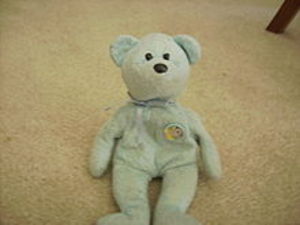In the mid-1990s, there were places in the United States where you could use Beanie Babies as currency. By 2000, you were hard pressed to give Beanie Babies away for free. What happened to this Sarah Palin of the toy collectable world?
Seller’s Market
At the beginning of the Beanie Baby craze in 1993, not a lot of people were connected to the Internet. Sites like eBay didn’t show up until 1995. By 1995, word had gotten out about how great Beanie Babies were. They were relatively inexpensive, cute and easily storable. Their tags had cute poems and birthdays to add to the fun.
And no one knew how many of each Beanie Baby had been made. If you really wanted a particular Beanie Baby and you thought that the one offered for sale would be the ONLY Beanie Baby of its kind offered for sale ever in your life time, you wound paying whatever the seller wanted. The economy was also a lot better in the early 1990s than it is today, so even small children had disposable income which often went to Beanie Babies.
The Next Great Antique
Beanie Babies had several qualities that indicated that they were going to be the next great sought-after collectable. Each Beanie Baby only came out for a short time. There were many special editions, which made them even more collectable. There was enough variety in Beanie Babies to keep any collector happy, even if they only wanted to collect Beanie Baby bears, dogs, birds or special editions.
Everyone at that time grew up hearing stories about how someone made a fortune keeping hold of their old comic books, baseball cards or other collectable. As frustrated kids got older, they discovered that their toys (long sold at garage sales or tossed out by their parents) were now worth a small fortune. Many people were looking at collectables to invest in to help make up for past losses.
When people heard of the process some collectors were paying for Beanie babies, the floodgates opened. There was money in them thar Beanie Babies!
Too Many Beanies
Eventually in 1999, Ty Warner (the company that makes Beanie Babies) decided to up the market value of the Beanie Babies they made by stopping production of them altogether. This wouldn’t last, because the cat was already out of the bag.
Collectors discovered that there were a lot more Beanie Babies made and available for sale than they originally thought. They found this out primarily through eBay, when you could compare the prices of each Beanie Baby – and how often they went up for sale. When people realized that, the price of Beanie Babies crashed.
Without the promise of money, a lot of would be collectors left the market. All that was left were people who liked really liked Beanie Babies. Now, they are worth just about what you would pay for them at the store. The days of $24,000 American Bear Beanie Babies are long gone.
Reference:
- world.ty.com/
- www.emrcollectibles.com/articles.htm?article=1
- www.helium.com/items/1691406-how-to-collect-beanie-babies
